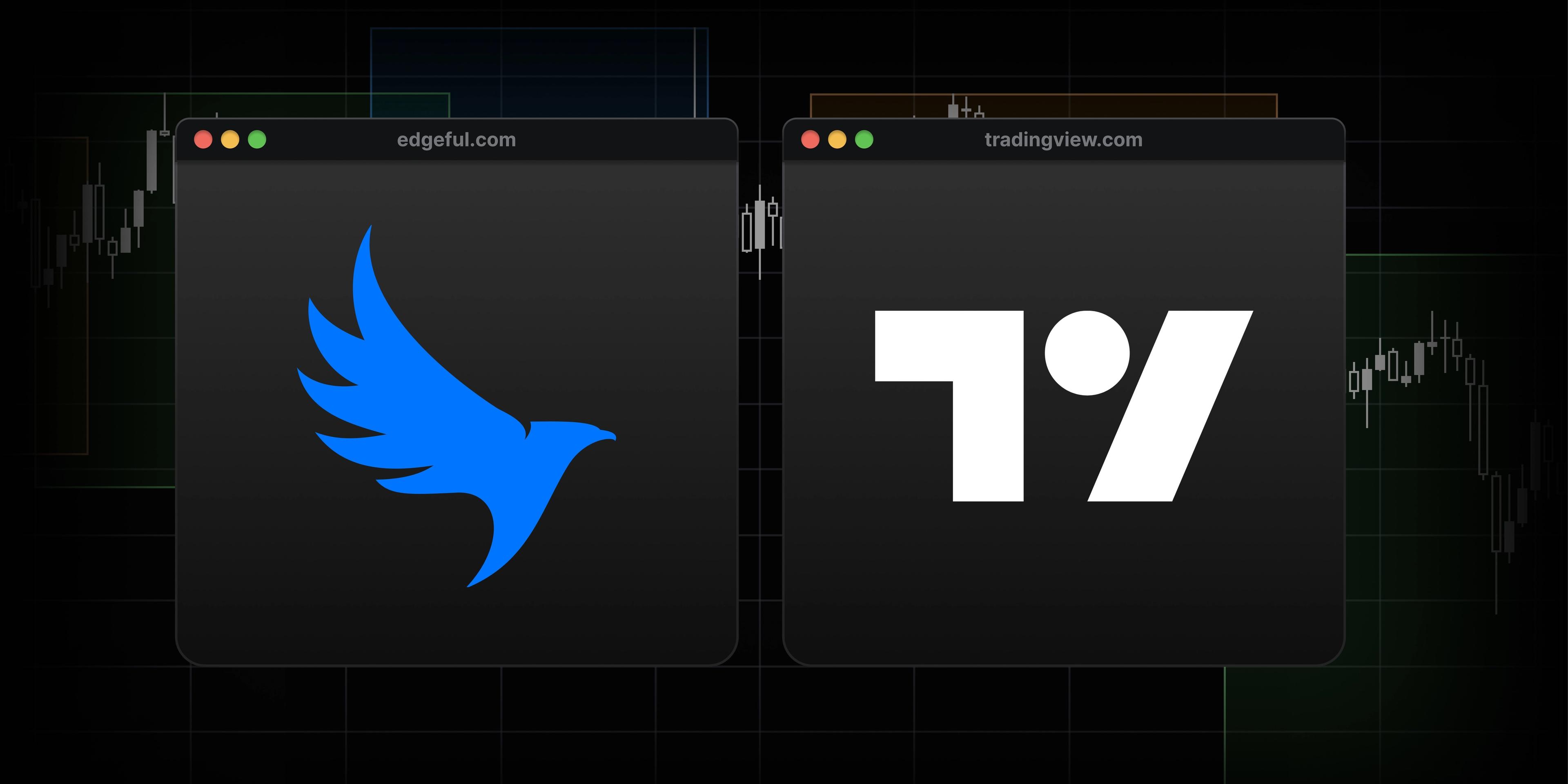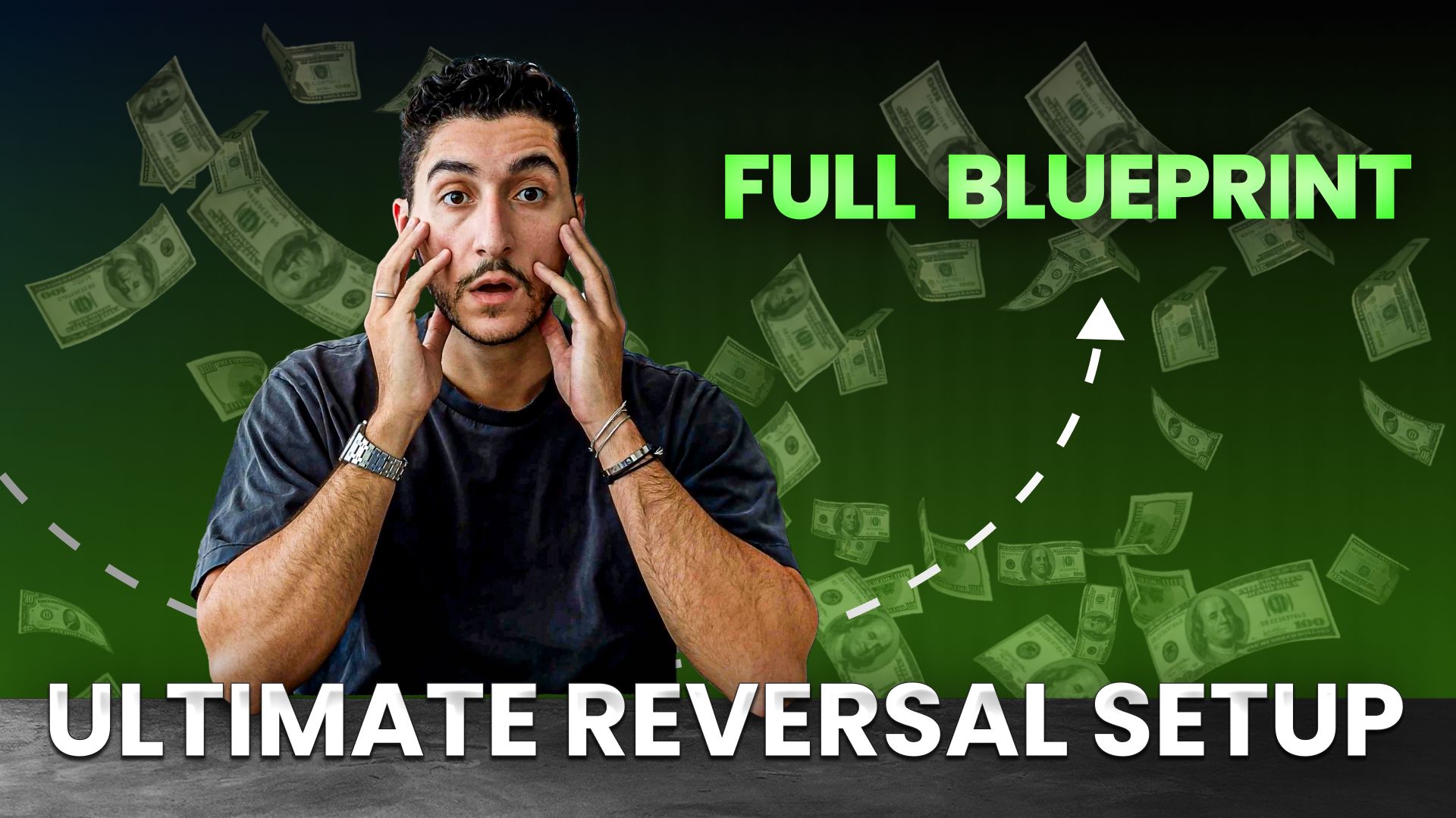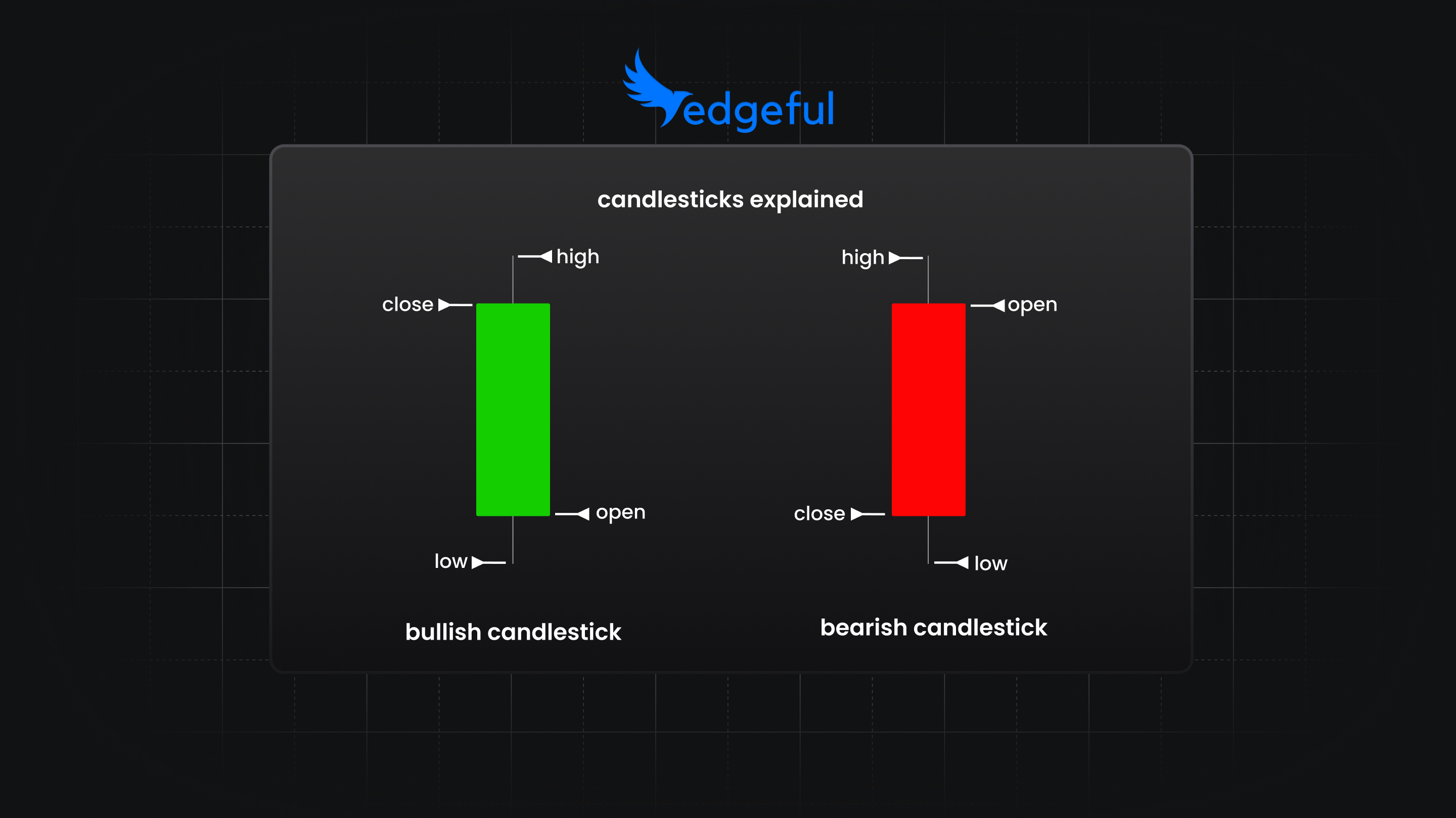top TradingView indicators for futures trading: 5 exclusive data-backed tools

after talking with thousands of traders over the years, I see the same problem every single day: traders spending 10-15 minutes (or more) before market open manually drawing lines on their charts with zero statistical backing.
here's the thing — 99% of those support and resistance levels are just lines that "look right" or worked once or twice in the past. meanwhile, there's a better way: data-backed TradingView indicators that automatically plot levels with historical probabilities behind them.
table of contents
- why most traders waste time with manual plotting
- what makes edgeful indicators different
- how to access exclusive indicators
- top 5 tradingview indicators for futures traders
- complete trading setup example
- implementation guide
- frequently asked questions
- key takeaways
why most traders waste time with manual plotting
I see futures traders every single day drawing random support and resistance lines, fibonacci retracements, and trend lines from last week — and most of these levels have absolutely no statistical backing.
the problem isn't finding levels to trade. with futures markets trading nearly 24 hours a day, there are always levels that "look important." the real problem is that these manually drawn levels are based on hope rather than data.
that's where edgeful's exclusive TradingView indicators come in. instead of guessing which levels matter, you can use indicators that connect directly to historical probabilities and automatically plot data-backed levels for you.
what makes edgeful's top TradingView indicators different
here's what separates our TradingView indicators from the thousands of others available:
- data-backed logic: every level plotted connects to historical probabilities from our reports
- automatic updates: no more manually drawing the same levels every single day
- customizable parameters: adjust timeframes, calculations, and visuals to match your futures trading strategy
- exclusive access: invite-only library for paying edgeful subscribers
- report integration: each indicator connects to specific report data and content you've already learned
most importantly, these indicators eliminate the temptation to add random levels to your chart. every line has a purpose and a probability behind it.
how to access our exclusive TradingView indicators
getting access to these top TV indicators is straightforward, but you need to be a paying edgeful subscriber:

- upgrade to any edgeful subscription plan
- go to your edgeful dashboard and input your TradingView username
- check your tradingview indicators library for the new "invite only" section
- access 35+ exclusive edgeful indicators
once you're in, you'll see indicators for every major report we've covered — gap fill, initial balance, opening candle continuation, previous day's range, fair value gaps, market sessions, and many more.
but here's my warning: don't use all of them at once. pick 2-3 that align with your favorite reports and trading style. cluttered charts lead to analysis paralysis and poor decision-making.
top 5 tradingview indicators for futures traders
1. edgeful - market sessions
what it does: automatically highlights specific trading sessions (London, NY, Asia) on your 23-hour futures charts

futures markets trade nearly 24 hours a day, but most successful traders focus on specific sessions. this indicator eliminates the guesswork of when each session starts and ends.
why it matters: if you're trading market session breakout strategies, you need to know exactly when the London session closes at 11:00am ET to start looking for NY session breaks. the NY session breaks either the London high or low 83.2% of the time on YM.
customization options:
- choose which sessions to highlight (London, NY, Asia, or all)
- customize colors and transparency
- adjust for different time zones
- set alerts for session opens/closes
this is especially powerful for futures traders who get distracted by overnight moves. when you can clearly see which session is which, you stop caring about what happened at 2am and focus on the data that actually matters for your strategy.
2. edgeful - ORB/IB (opening range breakout/initial balance)
what it does: plots customizable high and low levels for any timeframe — typically the first 15 minutes (ORB) or first hour (initial balance)

this is probably our most popular tradingview indicator because it connects to two of our highest-probability reports.
why it matters: instead of manually drawing boxes every single day, this indicator automatically plots the levels and updates them as the ranges form. on YM, the initial balance breaks one side 76% of the time — these are incredibly strong probabilities for futures trading.
connects to:
customization options:
- timeframe selection (5min, 15min, 30min, 1hr)
- breakout criteria (by wick vs by close)
- candle timeframe for confirmation
- visual styling (box fill, line thickness, colors)
- alerts for initial breaks
what I love about this indicator is that it shows you both the ORB and IB simultaneously. since the ORB is often contained within the IB, you can see how they relate to each other and use both for different profit targets.
3. edgeful - opening candle continuation (OCC)
what it does: plots a colored line showing the direction of the first hour's candle — green line for bullish first hour, red line for bearish

this might seem simple, but it's incredibly powerful for establishing session bias in futures trading.
why it matters: the OCC report shows that on YM, a green first hour results in a green session close 72% of the time, and a red first hour results in a red close 70% of the time. this indicator gives you instant visual confirmation of your bias.
customization options:
- timeframe for the "first hour" calculation
- line position on chart (top, middle, bottom)
- line thickness and colors
- text labels showing percentages
- alerts when bias changes
I use this every single day because it eliminates any confusion about session bias. when I see a green line, I know there's a 72% chance the session closes green, so I'm looking for long setups and being cautious about shorts.
4. edgeful - previous day's range
what it does: automatically plots the previous session's high and low levels

these aren't reversal levels — they're bias indicators with 81% probabilities for futures traders.
why it matters: when price breaks the previous day's high on YM, there's an 81% chance the session closes green. this indicator ensures you never miss these critical levels and always have them properly marked.
customization options:
- session selection (NY session only vs 24-hour range)
- calculation method (previous close to close vs open to close)
- line styles and colors
- extend lines across the session
- alerts for level breaks
the best part about this tradingview indicator is that it automatically updates every session. you never have to remember to plot yesterday's levels — they're always there, and they're always accurate.
5. edgeful - fair value gaps (FVGs)
what it does: identifies and plots fair value gaps across multiple timeframes and tracks whether price respects or mitigates these levels within the same session

fair value gaps occur when there's a gap between three consecutive candles — a bullish FVG forms when price moves up aggressively, leaving a gap between candle 1's high and candle 3's low. a bearish FVG forms when price drops fast, creating a gap between candle 1's low and candle 3's high.
why it matters: our fair value gaps report shows you exactly how often these gaps get mitigated (price moves through them) vs staying unmitigated within the NY session. on the 5-minute timeframe, 75% of FVGs get mitigated the same day they form — this tells you whether to expect reversals or continuation.
key insight from the data: when 75% of FVGs get mitigated on 5-minute charts, you can expect price to move through these gaps rather than bounce off them. this means you can target moves that break through FVG levels instead of looking for reversals.
customization options:
- timeframes to scan (1min, 5min, 15min, 30min)
- mitigation criteria (by wick vs by close)
- session-specific gaps only (NY session vs 24-hour)
- visual styling for active vs mitigated gaps
- maximum number of gaps to display
important note: the indicator currently plots gaps from all sessions, but the report data focuses only on NY session gaps. focus on gaps that form between 9:30am-4:00pm ET for the most accurate probability data.
the key is understanding that most FVGs (75% on 5-minute) get mitigated the same day, so you're typically looking for continuation through these levels rather than reversals off them.
complete trading setup example
here's how I combine 3 of these tradingview indicators for a clean, data-backed futures trading setup on YM:
- indicator 1: market sessions (to know when London closes and NY action begins)
- indicator 2: previous day's range (for session bias when levels break)
- indicator 3: ORB/IB (for entry triggers and profit targets)
here's how this plays out in real time:
- market sessions indicator shows London session ending at 11:00am ET
- price breaks above previous day's high (81% chance of green close)
- ORB/IB indicator shows initial balance breakout to the upside (76% probability of single break)
- all three indicators align for a bullish bias — time to look for long entries
this gives me confluence across multiple high-probability reports without cluttering my chart with random lines.
implementation guide
- start small: pick 2 of our top TradingView indicators maximum when you first get access. master those before adding more.
- match your strategy: if you're a gap fill trader, use the gap fill indicator. if you trade initial balance breakouts, use the ORB/IB indicator. don't use indicators for setups you don't trade.
- customize thoughtfully: spend time adjusting the settings to match your futures trading style. if you trade 30-minute ORBs instead of 15-minute, change the timeframe.
- test different combinations: try different indicator combinations over a week and see which ones give you the clearest signals for your futures trading approach.
- set alerts: use the alert features so you don't have to stare at charts all day waiting for setups.
- don't overtrade: just because an indicator shows a level doesn't mean you have to trade it. wait for confluence between multiple indicators or reports.
frequently asked questions
what are the best tradingview indicators for futures day trading?
the top TradingView indicators for futures day trading are market sessions (for timing), ORB/IB (for range breakouts with 76% probability), opening candle continuation (for session bias with 72% accuracy), previous day's range (for bias with 81% probability), and fair value gaps (for continuation targets with 75% mitigation rate).
how do you get exclusive TradingView indicators for futures trading?
to access exclusive tradingview indicators for futures trading, you need a paying edgeful subscription. then input your TradingView username in the edgeful dashboard to unlock the invite-only indicator library with 35+ data-backed tools.
which TradingView indicators have the highest win rates for futures?
the highest win rate tradingview indicators for futures trading include the initial balance indicator (76% single break probability on YM), previous day's range (81% session bias accuracy), and opening candle continuation (72% directional accuracy). these are all based on 6-month historical data.
can these TradingView indicators be used for stocks and crypto?
while these tradingview indicators were designed specifically for futures trading and the 23-hour market structure, many can be adapted for stocks and crypto trading. however, the statistical probabilities may differ across different asset classes and market structures.
how many TradingView indicators should I use at once?
for optimal futures trading performance, use 2-3 tradingview indicators maximum. using too many indicators leads to analysis paralysis and conflicting signals. focus on indicators that align with your specific trading strategy and the edgeful reports you follow.
key takeaways
- eliminate manual plotting: these exclusive tradingview indicators automatically plot data-backed levels with historical probabilities
- focus on futures-specific tools: the top 5 indicators are market sessions, ORB/IB, opening candle continuation, previous day's range, and fair value gaps
- access requires subscription: these tradingview indicators are invite-only for paying edgeful subscribers through the dashboard
- start with 2-3 indicators: avoid chart clutter by focusing on indicators that match your trading strategy
- data beats guesswork: every level plotted connects to actual probabilities, not random support and resistance
the difference between profitable futures traders and everyone else isn't that they have more tradingview indicators on their charts — it's that every level they trade has historical probabilities backing it up.
these indicators ensure you're never trading random support and resistance again. every line on your chart connects to actual data from our reports, giving you the confidence to execute when setups align.
join thousands of futures traders using data-driven strategies
ready to eliminate manual chart plotting forever? join over 15,000 traders who receive our weekly stay sharp newsletter with data-backed futures trading strategies, exclusive indicator updates, and real market analysis.
subscribe to stay sharp newsletter
remember — these tradingview indicators are only available to paying edgeful subscribers, and they're designed to work with the strategies we cover in stay sharp. if you're not using the reports, the indicators won't help. but if you are using our data-driven approach, these tools will save you hours of work and dramatically improve your execution.


